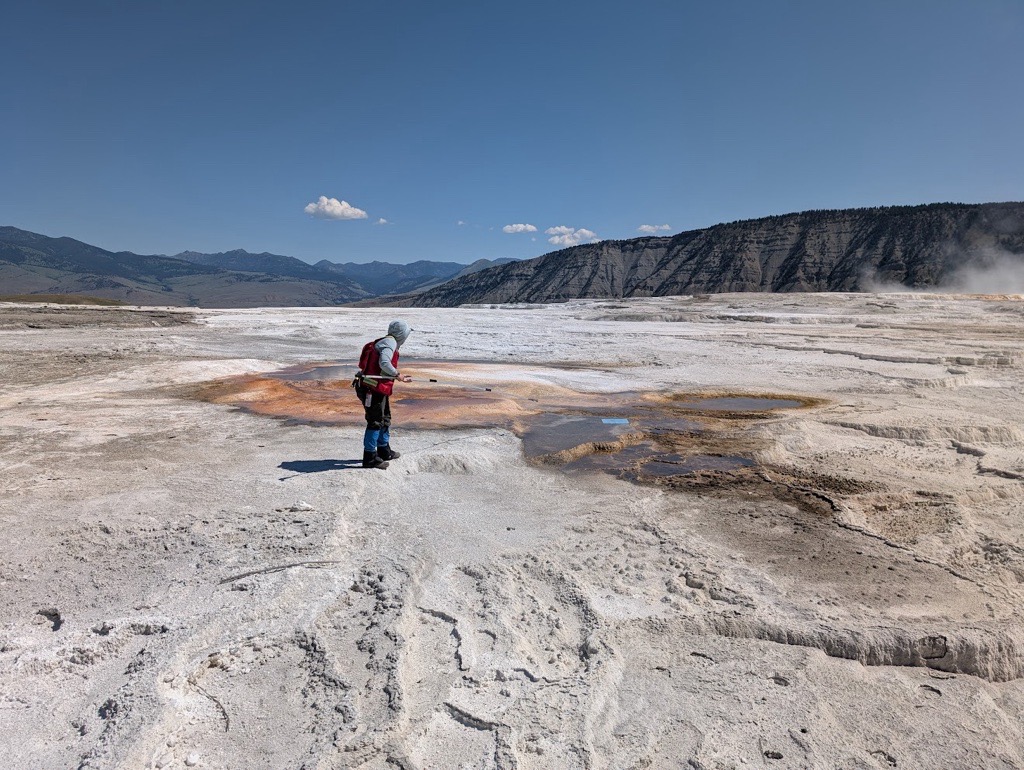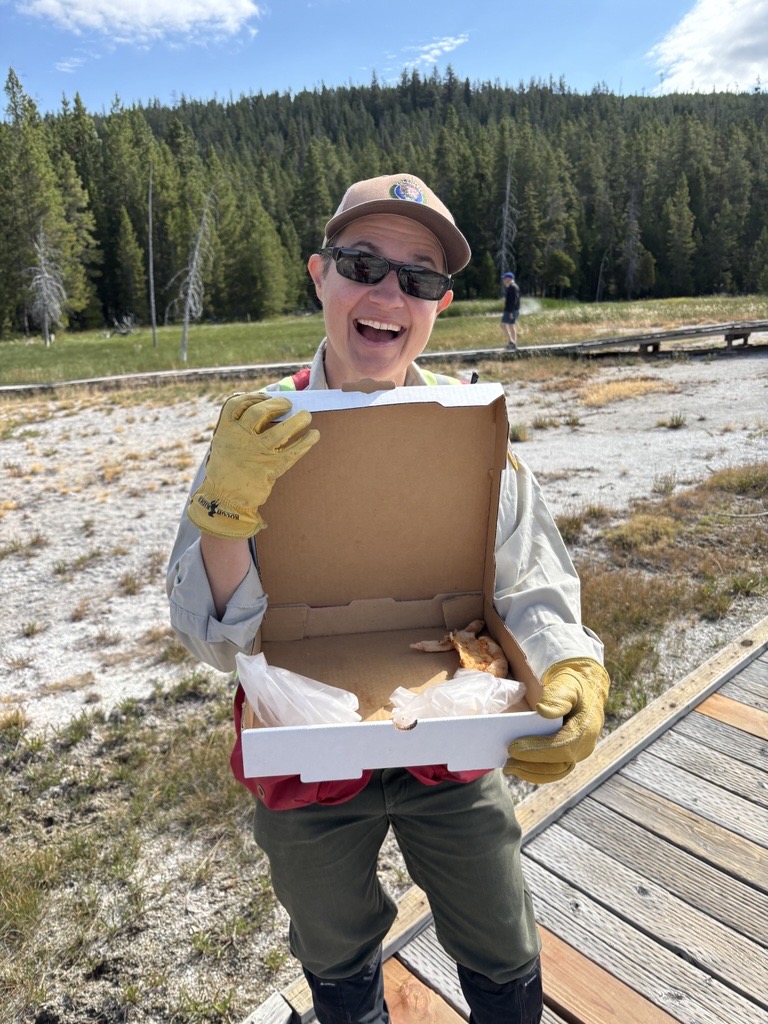It’s been a busy year so far for Yellowstone, with over 3.5 million recreational visits to the USA’s oldest national park up until the end of August. With all those visitors comes a whole lot of trash – some of which you’d expect to see, and some of it… well, not quite so much.
In fact, over 13,000 pieces of trash have been collected by National Park Service geologists in Yellowstone’s hydrothermal areas so far in 2025 – specifically, by those who are part of the Yellowstone Geology Program. Donning red safety vests, this team not only conducts scientific work, such as keeping an eye on the activity of the park’s many hydrothermal features, but also ensures those features are kept trash-free.
That’s not always an easy job, as Margery Price, a physical science technician with the program, recently explained in a column for the US Geological Survey.
“To reach this debris, which is often literally floating in boiling water, the Geology team uses a collection of tools: some off-the-shelf and others manufactured in-house using little more than creativity and elbow grease,” Price writes. “From 2-foot [0.6-meter] to 12-foot [3.7-meter] and even 30-foot [9-meter] grabber poles, to fishing rods and extra-long slotted spoons, the team uses (or creates!) any device necessary to remove items safely.”
But hold fire before you go and grab your own makeshift device – there’s more to this type of trash collection than meets the eye. The team, Price explains, “are trained to carefully traverse Yellowstone’s dangerous yet delicate hydrothermal areas, preventing damage to fragile bacteria mats and geologic formations while also keeping themselves safe.” Best believe you really don’t want to end up slipping into a hot spring for the sake of a rogue chip packet.

Team member Mara Reed using a grabber to retrieve a map of the park.
Image credit: NPS photo by Samantha Hilburn (public domain)
So, what kind of stuff are Price and the rest of the team fishing out? Sometimes, it’s sticks and rocks; while these might not seem like they’d be much of a problem, it turns out that even the park’s natural debris can affect the delicate balance of conditions in a hydrothermal feature, changing its temperature, color, and even how it erupts.
As for the debris left by humans – well, that’s where things start to get a little more amusing. One thing the team has seen a lot of this year is hats – over 300 of them, in fact. Some might have been thrown to the ground, but plenty will have been swept off the heads of unsuspecting visitors as they were hit by Yellowstone’s intense winds.
Then, there’s the really weird stuff. “With so much time spent collecting debris, it’s only natural to find some bizarre items,” writes Price. “Favorite finds from the team during the summer of 2025 include a Birkenstock sandal, a pizza box with slices still inside, a fake Louis Vuitton bucket hat, a stuffed koala toy, a ball cap with the phrase ‘I PEE IN THE LAKE,’ and a Polaroid picture of Excelsior Geyser – which was found within Excelsior Geyser’s crater!”

Pizza, anyone?
Image credit: NPS photo by Margery Price (public domain)
Let’s hope whoever that ball cap belonged to doesn’t pee in the pool too.
Like the hats that fly off people’s heads, most of the trash that ends up in Yellowstone’s hydrothermal areas winds up there unintentionally, “although sunflower seed shells, orange peels, and other food materials discarded by the occasional visitor accumulate as well and are particularly time-consuming for the team to remove,” writes Price.
What can visitors do to help the team out? “When you visit the park, hold on tight to your hats, stay on marked boardwalks and trails, and make sure all your trash (even the food!) ends up in a trash can,” says Price.
Source Link: Pizza Slices, Polaroid Pictures, And Over 300 Hats: What’s Left Behind In Yellowstone’s Hydrothermal Areas?